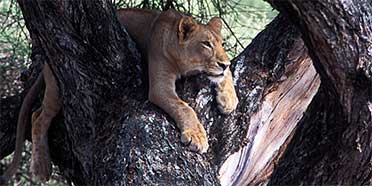
Safari Tours to Lake Manyara NP
-
![4-Day Thrilling Tanzania Safari]()
4-Day Thrilling Tanzania Safari
$1,350 pp (USD)
Tanzania: Private tour
Mid-range Lodge & Tented CampYou Visit: Arusha (Start), Tarangire NP, Serengeti NP, Ngorongoro Crater, Lake Manyara NP, Arusha (End)

Safari360
4.8/5 – 131 Reviews
-
![11-Day Tanzania Safari with Zanzibar Beach Break]()
11-Day Tanzania Safari with Zanzibar Beach Break
$9,199 to $12,299 pp (USD)
Tanzania: Private tour
Mid-range Lodge & Tented CampYou Visit: Arusha (Start), Tarangire NP, Lake Manyara NP, Ngorongoro Crater, Serengeti NP, Zanzibar (End)

Wayfairer Travel
4.8/5 – 185 Reviews
-
![11-Day Unforgettable Wildlife Adventures & Beach Retreat]()
11-Day Unforgettable Wildlife Adventures & Beach Retreat
$2,994 to $3,104 pp (USD)
Tanzania: Private tour
Mid-range Lodge & Tented CampYou Visit: Arusha (Start), Tarangire NP, Lake Manyara NP, Central Serengeti NP, Ngorongoro Crater, Zanzibar Stone Town (Zanzibar), Zanzibar (Tanzania Beaches), Paje (Zanzibar), Zanzibar Airport (End)

Ozon Light Tours
5.0/5 – 192 Reviews

 Tanzania Parks
Tanzania Parks











